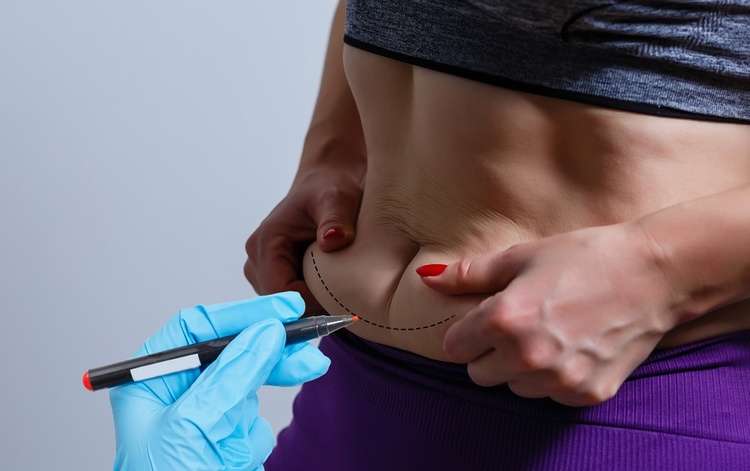Understanding Liposuction: A Complete Fat-Removal Guide
Liposuction removes stubborn, localized fat to refine body shape. This comprehensive guide explains which areas can be treated, who makes a good candidate, potential complications, what recovery typically looks like, and which factors drive cost to help you decide if liposuction fits your body-contouring goals.

Understanding Liposuction: A Complete Fat-Removal Guide
Liposuction is a common surgical option for people seeking to sculpt specific areas by removing pockets of fat that don’t respond to diet or exercise. It’s not intended for major weight loss but can produce noticeable improvements in body contours. This article walks through the treatment zones, ideal candidates, risks to consider, recovery expectations, and the main cost drivers so you can make an informed choice.
What areas can be treated with liposuction?
Liposuction can address a variety of locations where fat tends to persist. Surgeons often treat one or multiple areas in a single procedure, depending on safety and the patient’s goals. Typical target zones include:
- Abdomen and waist — reduces love handles and flattens lower belly bulges.
- Thighs and hips — sculpts inner and outer thigh fullness and smooths hip contours.
- Arms and back — trims upper-arm fat and diminishes back rolls.
- Chin and neck — enhances jawline definition by removing submental fat.
- Chest — used to improve male gynecomastia or reduce excess tissue.
- Buttocks and flanks — refines side contours and addresses dimpling.
Because the procedure selectively removes fat, your surgeon can combine areas during the same session as long as the total treatment remains safe.
Who is an ideal candidate for liposuction?
Liposuction is best suited for people who want targeted contouring rather than substantial weight reduction. Good candidates generally share these characteristics:
- Stable body weight near their ideal — commonly within about 30% of target weight.
- Adequate skin elasticity so the skin can contract after fat removal.
- Overall good health and the ability to undergo anesthesia and surgery safely.
- Realistic expectations about achievable results and limits of the procedure.
- Non-smokers, or those prepared to quit for the recommended pre- and postoperative period.
- Localized fat deposits that have been resistant to diet and exercise.
It’s important to understand liposuction is a contouring technique, not a treatment for obesity; maintaining a stable weight and healthy habits is crucial to preserving results.
What are the risks and potential complications?
All surgeries carry risks, and liposuction is no exception. Discuss potential complications thoroughly with a board-certified plastic surgeon before you proceed. Possible issues include:
- Infection, which is uncommon with proper care but still possible.
- Bleeding or hematoma, where blood collects beneath the skin.
- Contour irregularities or asymmetry, producing uneven or wavy skin texture.
- Numbness or altered sensation, usually temporary but sometimes longer lasting.
- Fluid accumulation (seroma) that may need drainage.
- Poor wound healing or noticeable scarring influenced by health and aftercare.
- Adverse reaction to anesthesia — a risk with any operation.
- Blood clots, including deep vein thrombosis or, rarely, pulmonary embolism.
- Skin discoloration or permanent changes in pigmentation.
Selecting a board-certified, experienced surgeon reduces the likelihood of serious complications, but no procedure can eliminate all risk.
What is the recovery process like after liposuction?
Recovery depends on how many areas were treated and how much fat was removed. Typical stages include:
- Immediate aftermath: Expect swelling and bruising for several weeks.
- Pain management: Mild to moderate discomfort is common and controllable with prescribed or over-the-counter medications.
- Compression garments: These are usually worn to limit swelling and help the skin conform to new contours.
- Activity limits: Most people rest for a few days and then gradually increase light activity.
- Work return: Many patients with desk jobs can go back within about a week, though this varies by case.
- Exercise timeline: Avoid strenuous workouts for 2–4 weeks or until your surgeon clears you.
- Final results: Swelling subsides over months; optimal contours generally emerge within 3–6 months.
Following postoperative instructions for wound care, garment use, activity restrictions, and follow-up visits helps achieve the best outcome.
How much does liposuction cost, and what influences pricing?
Costs for liposuction vary based on several elements. The main factors that affect price include the number and size of areas treated, the surgeon’s experience, anesthesia and facility fees, geographic location, and whether you combine procedures.
| Factor | Description | Typical Cost Impact |
|---|---|---|
| Treatment Area | Size and number of areas treated | $2,000 - $3,500 per area |
| Surgeon’s Experience | Board certification and reputation | Can increase cost by 20–50% |
| Geographic Location | Urban vs. rural or coastal markets | Varies by region |
| Anesthesia Fees | Local vs. general anesthesia | $500 - $1,500 |
| Facility Fees | In-office surgical suite vs. hospital | $500 - $2,000 |
| Additional Procedures | Combined surgeries (e.g., tummy tuck) | May change overall cost |
Cost disclaimer: Prices are estimates and can vary by provider, region, and individual needs. Consult your surgeon for a personalized quote and financing options.
Making an informed decision
If you’re considering liposuction, book a consultation with a board-certified plastic surgeon to discuss your goals, health history, and expectations. A thorough evaluation will determine whether liposuction or an alternative treatment is the best path to the results you want. Remember that sustaining results relies on a healthy lifestyle and stable weight.
This article is for informational purposes only and should not be considered medical advice. Please consult a qualified healthcare professional for personalized guidance and treatment.






